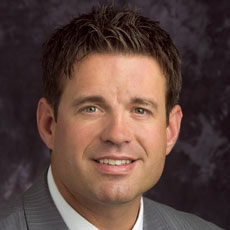
For most operators, owners and CFOs in long-term care facilities, control is not a word that comes to mind when insurance is the topic. But with price increases hitting commercial insurance lines, market and coverage limitations within the aging services sector, as well as reduced capacity to service this vertical, greater control is exactly what long-term care executives should demand.
When control is the goal, a captive can be the answer. Captives, either alone or part of a group, provide business owners with the unique alternative of owning their own insurance company. This can translate to greater control over claims handling, professional partners, stabilization and reduction of the cost of risk, risk management and loss control and ultimately, control over underwriting profits and investment income.
The move from traditional insurance to a captive will likely feel like a quantum leap; the organization will absolutely need the financial wherewithal to take such a risk, but against the challenging landscape of the traditional insurance market, that risk is outweighed by the benefit of greater control and potential for long-term savings on insurance.
Ownership for the Long-Term
Under a captive, coverage prices are based on members’ claims histories and not on industry averages and aggregate books of business. Owners assume a portion of the risk by taking on a large retention, in accordance with their own risk appetite and financial situation. Unlike traditional insurance where business owners pay a premium and let the carrier pay for the claim, captive members are shareholders and are required to fund a large portion of a claim. That is why it is critical that captive owners operate as safely as possible – they have a vested interest to raise their safety standards and elevate their risk management standards. Most business owners are under the misconception that captives are an instant money-saver; the reality for nearly all captive members is that an organization’s safety culture and commitment to upholding world-class safety standards is the x-factor when it comes to captive insurance and cost savings. Ask the following questions of the organization first:
- Is the organization seeking a long-term risk management and insurance program that will last well into the foreseeable future?
- Does the organization already have a strong safety culture with buy-in from the top-down?
- Can the organization comfortably fund the initial captive formation expenses? A captive might require a substantial investment up front, whether to capitalize an in-house captive or to join a group. Recouping the investment usually requires a long-term commitment. (Five years at minimum.)
- Is the organization financially stable? In addition to the initial outlay of costs, there will be administrative costs and will it require internal monitoring, even if it is participating in a group.
- If you are for-profit, are you looking to take advantage of tax deductibility? Deductibility of premiums and deferred taxation of insurance income are the two principal advantages.
· IIf you are a non-profit, are you looking to generate additional revenue streams for your agency?
For-Profit and Non-Profit Differences
In a captive, approximately 35-40 cents of every dollar is put towards reinsurance costs and fixed expenses, while an impressive 60-65 cents of that dollar is invested where it accrues over time and can be used to pay claims under the organization’s control. If claims can be significantly controlled, captive members get their underwriting profit back in the form of a dividend.
Using your captive as a profit center can be immensely helpful to any organization, but it is critical to understand the differences between captive formations in for-profit and non-profit organizations. Most notably, if you are a 501C3, the tax deductibility is not as important as the unrestricted revenue generated through the repatriation of dividends to your organization. If you are a non-profit engaged in a cost-based reimbursement model, captives can also provide a tremendous benefit to you in terms of the overall profitability of your programs, provided losses are controlled. This allows you to allocate these additional funds to potentially fund other underfunded programs within the agency. This could effectively begin to decrease your dependence on waiver program reimbursement rates. Inversely, if you are a for-profit corporation, there are not only significant tax benefits to you, but also revenue stream implications via dividend payments.
Christopher M. Keith is a producer at The Graham Company, a property and casualty and employee benefits brokerage. He can be reached at [email protected] or 215-701-5297. Follow him on Twitter @TheGrahamCo.



